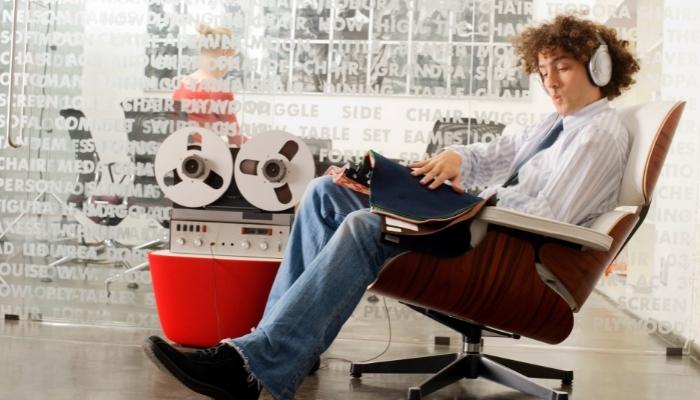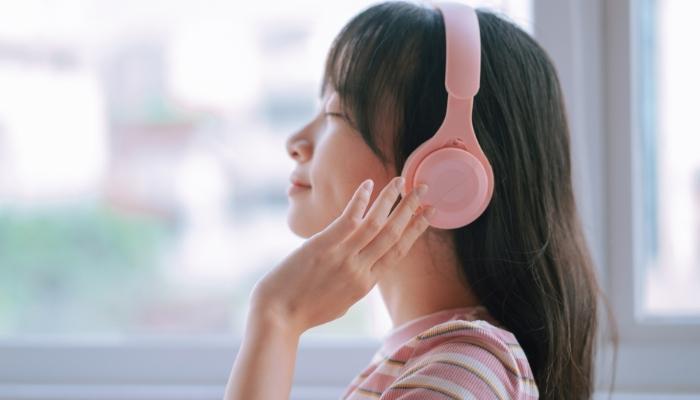Whether you work in a loud office or deal with heavy construction, blocking out the racket is more complicated than just hitting play on your music. But luckily, with noise-canceling headphones, you no longer have to suffer ambient noise!
However, not all noise cancellation is equal — there are different types, including active, adaptive, and passive. But with the right kind of noise-canceling headphones, you can block out annoying sounds and only focus on the good stuff.
Each type of noise-canceling uses a different process, which affects what you hear (and what you don't hear). We'll show you which is best for your needs!
Active Noise Cancellation

The main difference between active and passive noise cancellation is that active uses technology that looks for ambient sound to cancel out. Active noise-canceling, or ANC, uses mini microphones in each cup to listen to the ambient noise frequencies and produce an anti-phase sound wave of equal magnitude but an opposite shape to cancel it out.
Essentially, if the ambient noise is a +1, the active noise canceling creates a -1 to cancel it out, which is known as phase cancelation. With ANC, you can cut down on ambient noise by an average of 30dB and low-frequency noise like lawnmowers, subway traffic, or airplanes by 60dB. But while these microphones are actively seeking noise, they only pick up external noise, so the interior noise of the headphones is safe.
Keep in mind that active noise cancellation does create pressure against the ears when in use.
Feedforward vs. Feedback vs. Hybrid

With active noise canceling, where the microphones are placed is also important. When noise-capturing microphones are placed outside, they are feedforward active noise-canceling headphones, while feedback active noise-canceling headphones have mics set inside. And if they are on both sides, that is considered hybrid cancellation.
The microphone placement has different benefits and drawbacks:
- Feedforward Active NC: Uses a digital signal processor or ANC processing to map the noise signal to cancel out. However, a loose fit might let high-frequency noise like wind howl to bleed through.
- Feedback Active NC: Captures noise more accurately and better reflects what the user hears regardless of fit because of the self-correcting mechanism. While it is most effective at low frequencies, runaway amplification might cause ringing feedback in poorly designed headphones.
- Hybrid NC: Features the best noise attenuation and frequency coverage with fewer feedback issues. Works excellent for ambient noise and sound isolation while maintaining accurate and tailored noise cancellation.
Adaptive Noise Cancellation

Adaptive noise cancellation is similar to active in that it uses a negative noise to cancel the positive noise. However, adaptive noise canceling uses advanced algorithms to detect the sound around you and provides almost-perfect noise cancellation, depending on your environment.
These headphones also evaluate the fit of your headphones and adjust for the leakage that happens from bopping your head to the music, running, or simply wearing glasses. So, if you work in a factory with continuous noise, adaptive canceling headphones are an excellent choice.
Passive Noise Cancellation

With passive noise cancellation, you're dealing with a whole different process. Or, to be more accurate, a lack of a process. Passive noise cancelation is the simplest method because it creates a physical barrier to prevent noise from entering your ears, similar to earmuffs. These types of headphones are also considered noise-isolating headphones.
Passive noise cancellation works based on the headphone type. With in-ear headphones, the foam squeezes in your ear canal to make a perfect seal, similar to earplugs. But with over-the-ear headphones, the acoustic padding seals over your outer ears to block out the noise. Regardless of which type, these headphones can lessen mid-to-high frequency sounds by 15dB to 30dB.
So, if you live near a noisy place like an even center or like to DJ as a hobby, passive canceling headphones work great!
Find Your Headphones
Whether active or passive, the magic of noise-canceling headphones just can't be beaten. So, if you're looking at your work-good-but-not-great headphones and are tired of dealing with ambient noise, it's time to upgrade! At Toton’s TV, you'll find the headphones that'll help you find your focus.
Have questions? Contact our team! We'll help you select the choice that lets you get your jam on!